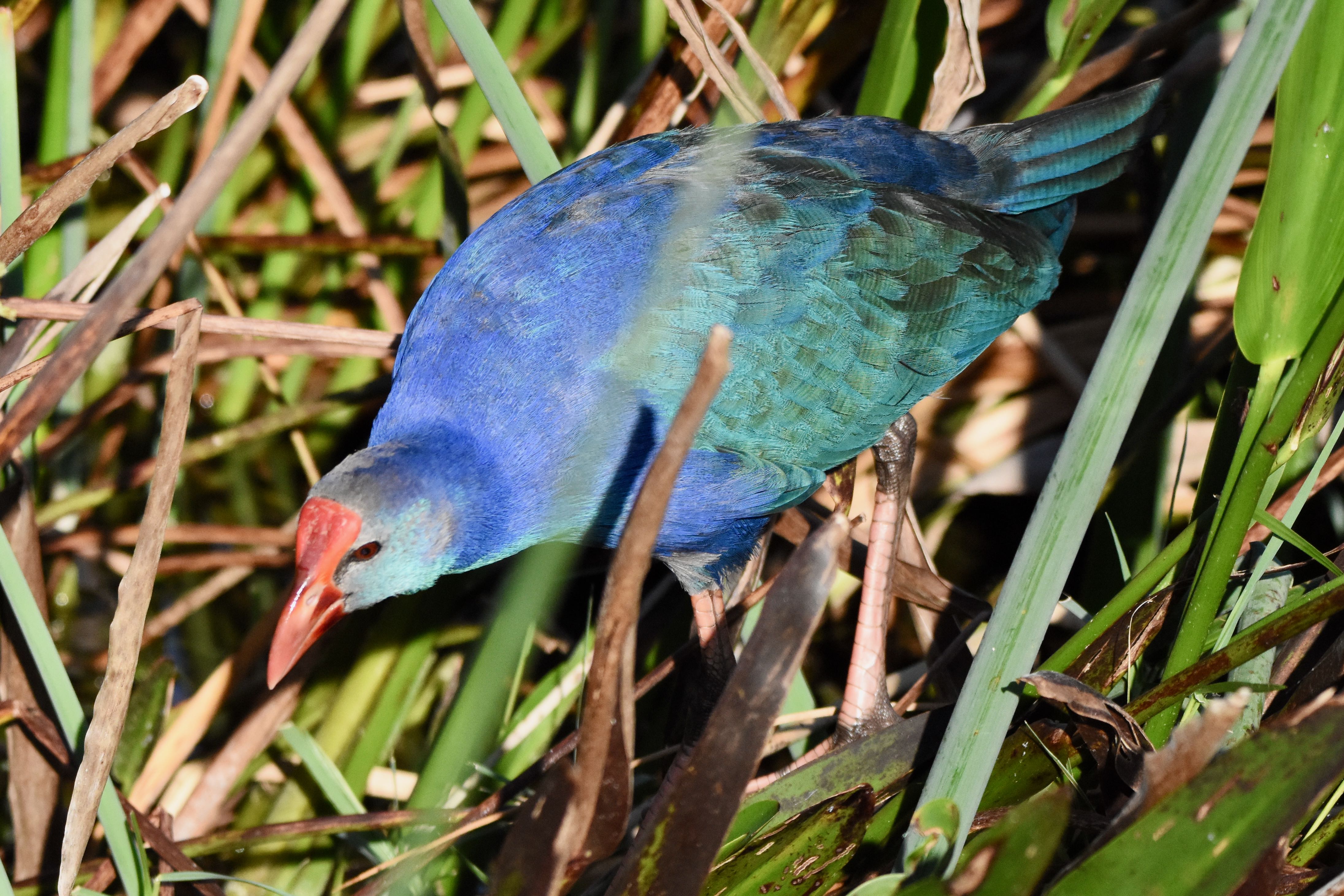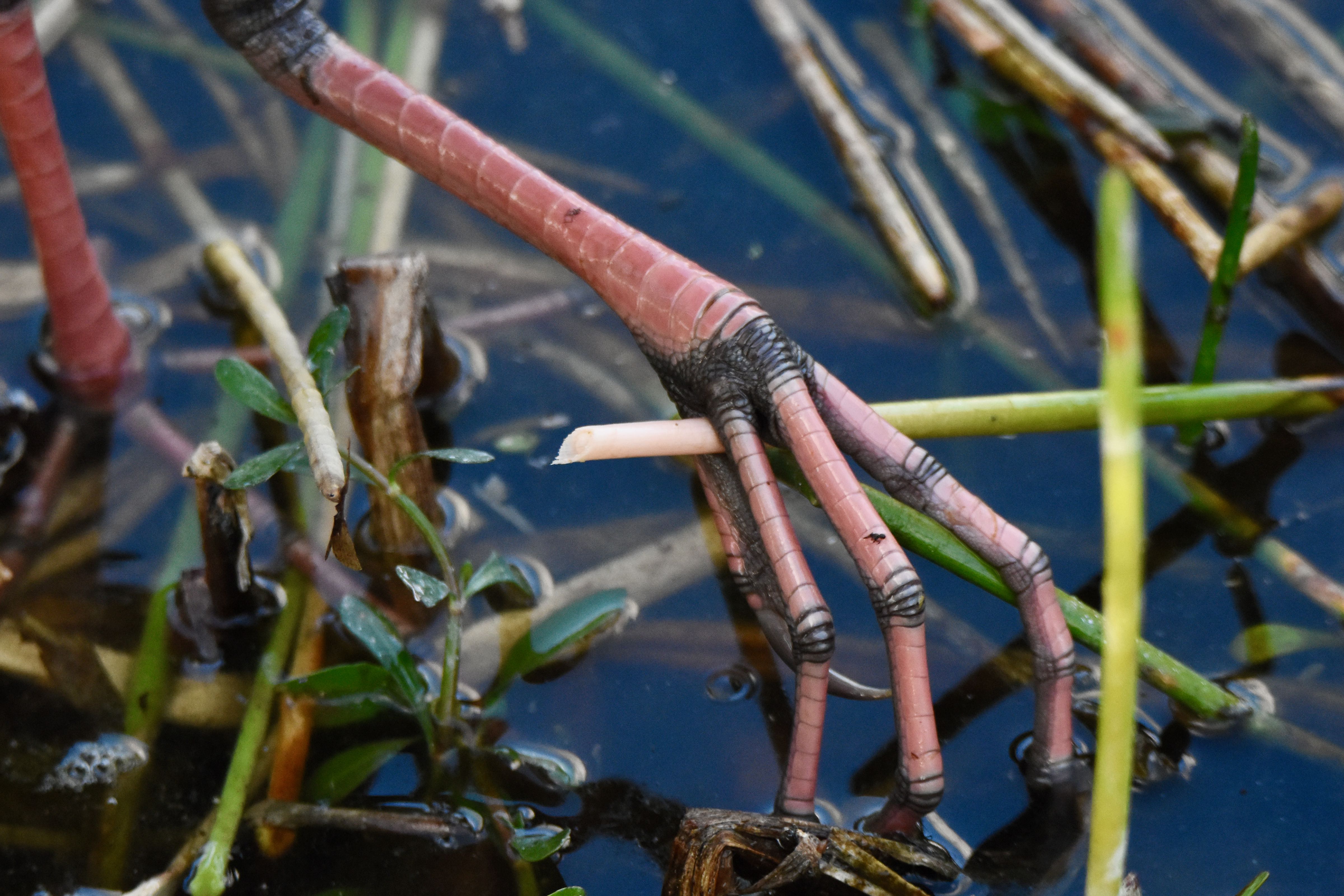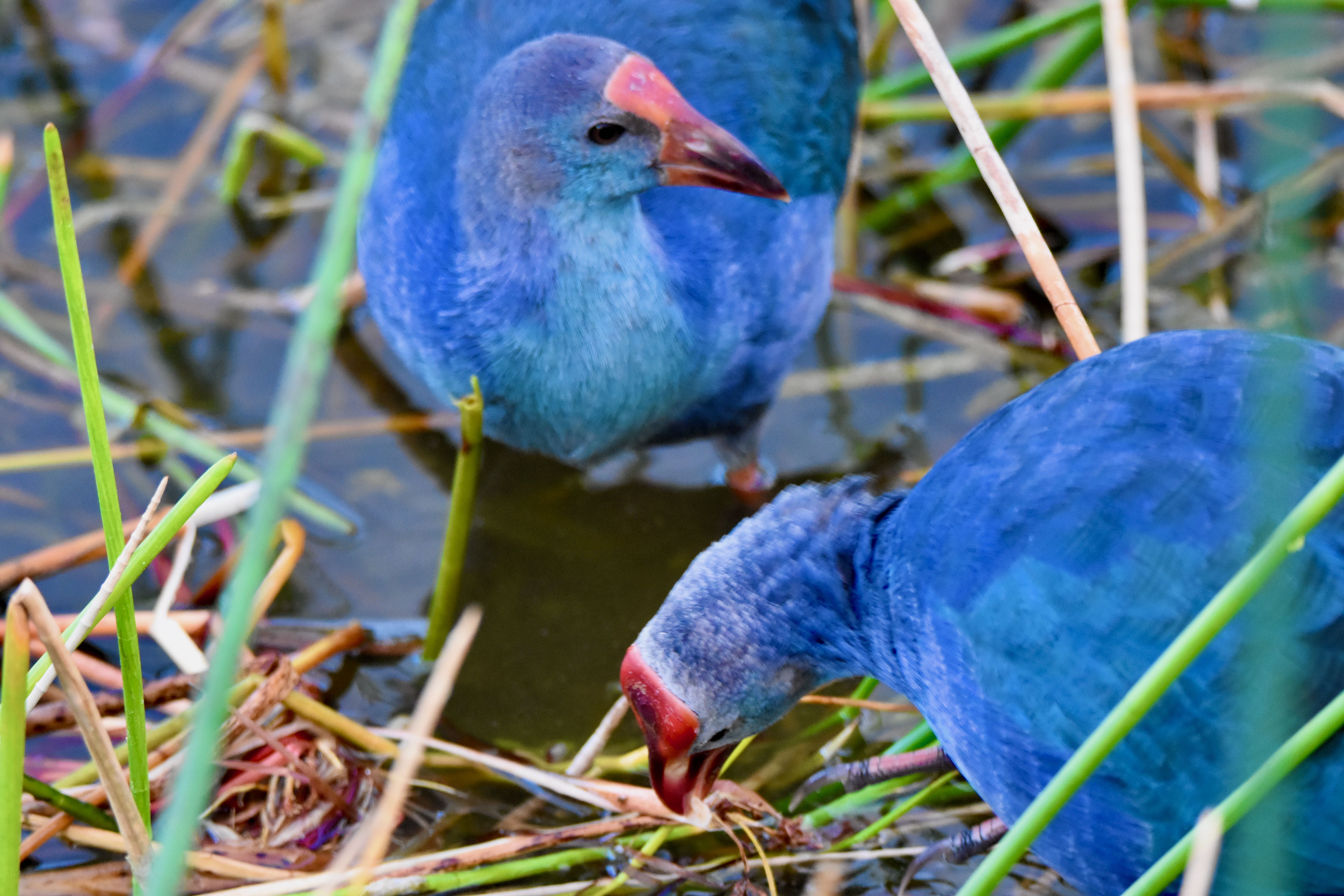
Purple swamphen, photographed at Green Cay Nature Center, Boynton Beach, Palm Beach County, in January 2017.
At first glance, it looks like a giant, mutant purple gallinule. Upon further review, as they like to say in the NFL, it's clearly something else, given the red forehead shield, red legs, ground-hugging habit — and overly large body. So what is it? The purple swamphen, of course.
If you haven't heard of this bird, AKA Porphyrio porphyrio, you're not alone. In the United States, it's a rare bird, found wild only in Florida — Miami-Dade, Broward, Palm Beach and Hendry counties, mostly. But it is not native to North America, let alone Florida.
As one theory goes, during the 1990s someone in Pembroke Pines kept the birds as pets and let them roam freely. From there, who knows? A second theory has the birds escaping from their Pembroke Pines owners in the aftermath of Hurricane Andrew in 1992. A third also involves Andrew: the Miami Zoo had purple swamphens, part of its "Wings of Asia" exhibit, eight of which managed to escape during the hurricane.
But it's not even clear that all the birds are same type — there are 13 subspecies of swamphens, two of which apparently are roaming around Florida. There are swamphens with blue heads, swamphens with gray heads. The grays, P. porphyrio poliocephalus, are a subspecies native to a region that extends from Turkey and the Caspian Sea to Sumatra in Southeast Asia. The blues are a different subspecies altogether.
Their numbers are still relatively small and it's unclear what impact their presence has had on native species. Swamphens are extremely territorial and aggressive birds. They could become competitors for food and habitat. Their impact could extend even to plant life, fish and other aquatic critters. And there's this: According to the Global Invasive Species Database, in places where swamphens are invasive, they are known to eat the eggs of other birds.
At least as far back as 2003, proposals were floated to eradicate the birds while their numbers were still small. In 2010, Field and Stream magazine reported that Florida officials were considering a swamphen hunting season. By 2010 or so, about 3,000 swamphen had been "removed" from the wild, according to a University of Florida fact sheet. The UF report said although swamphens are mostly confined to South Florida, they are quite mobile and could spread elsewhere. Isolated birds have been spotted as far north as Lake, Osceola and Brevard counties. Based on our purely nonscientific observations, swamphens have become increasingly common in our region, especially since about 2015.
This is a bird with an incredibly wide natural range that extends from southern Europe — Spain and France — into Africa, across continental Asia, into Indonesia, the Philippines and other southeast Asian countries, Australia and New Zealand and into the Pacific. Rich Romans considered the bird as noble and kept them as pets; in New Zealand and Samoa, they were highly regarded — in Samoa, only chiefs were allowed to own them.
As noted above they are large birds. A swamphen can be as long as 18 inches, with a wingspan reaching or exceeding three feet. They can weigh as much as a pound-and-a-half. A purple gallinule, by comparison, might reach 15 inches in length, with a wingspan of 22 inches and weigh about a half-pound. Besides size, the clearest way to separate swamphens from their cousins is their bill and frontal "shield." The purple swamphen has a red bill and shield, while the gallinule has a bill that is red with a yellow tip and a light blue shield. Moorhens have the same red shield as the swamphen, but its bill is red with a yellow tip.
Swamphens nest in shallow water amid dense vegetation, sometimes on platforms, sometimes floating. Both sexes build the nest, weaving dead vegetation together. They might build several nests, selecting the most concealed as the place to lay the eggs. Females can lay two clutches a season, each with two to seven eggs, which take three to four weeks to hatch. The parents split incubation duty. The American Birding Association added the swamphen to its checklist for bird watchers in February 2013.
Swamphens are members of Rallidae, the rail family, which includes gallinules and moorhens.
Green Cay Nature Center



